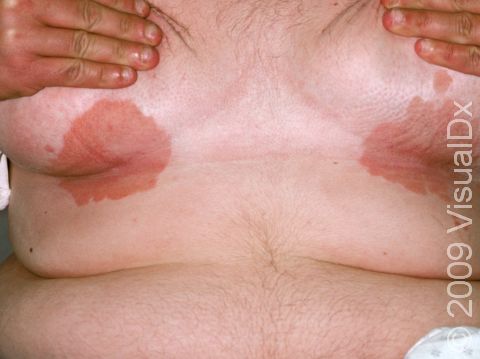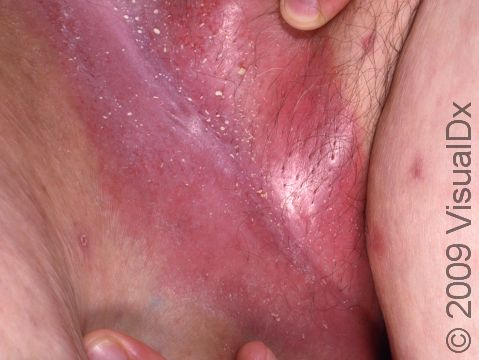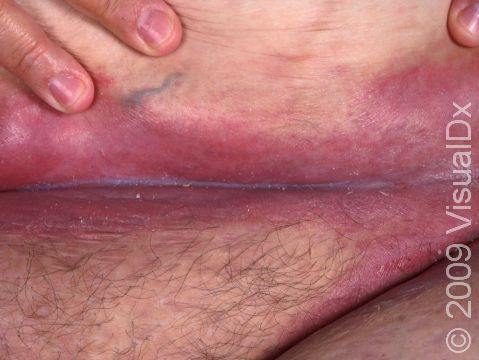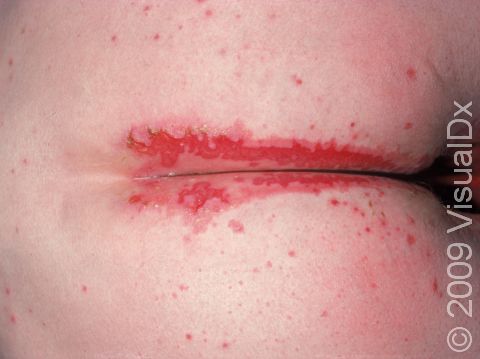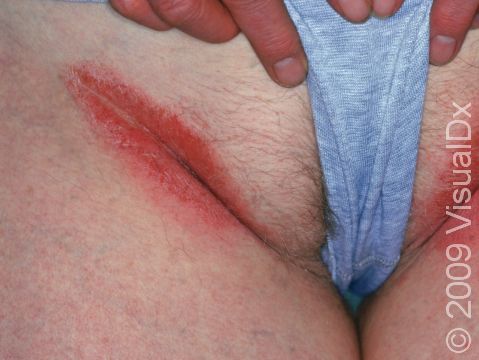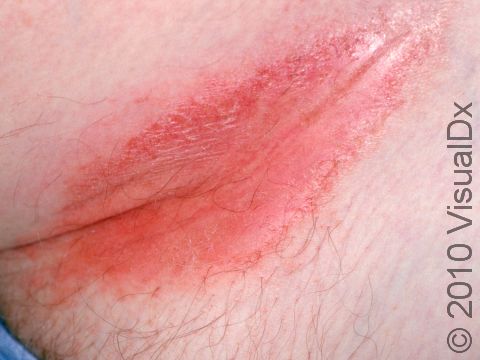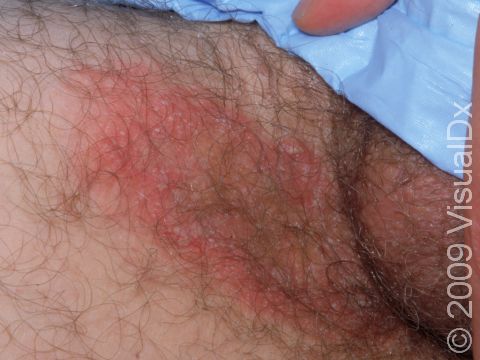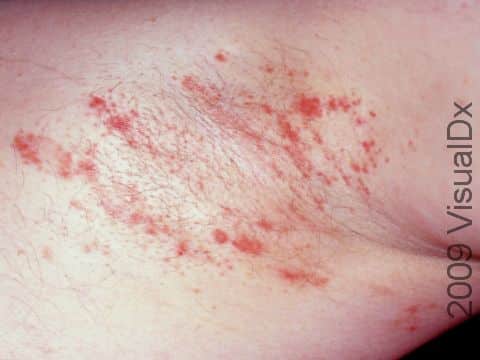Intertrigo
Intertrigo is irritation of touching skin surfaces in body fold regions (armpits, under the breasts, belly, buttocks, groin, and sometimes between fingers or toes). Intertrigo can be worsened by any conditions causing increased heat, wetness, and friction. Intertrigo may be complicated by superficial skin infection with yeast or bacteria.
Who's At Risk?
Intertrigo can affect people of all ages. Intertrigo is most frequently seen in overweight people, diabetics, people spending a lot of time in bed, diaper users, or anyone with incontinence problems. It can also occur in individuals wearing or using anything that causes friction or holds moisture against the skin surface.
Signs & Symptoms
Intertrigo is most commonly seen in skin fold areas. In people who are obese, the skin my become inflamed in neck creases, on the skin behind the knee or in front of the elbows, in the thigh and groin folds, or, less commonly, under the breast or belly folds. Redness and breaks in the skin (erosions) of opposing skin surfaces may be noted. The area may ooze or be sore or itchy.
Self-Care Guidelines
- Gently cleanse the affected areas daily with mild soap substitutes.
- Keep the areas dry and exposed to the air. If this is not easy to do, using absorbent cotton or fabric, as well as absorbent powders, may help (as long as fabrics are changed if they become damp). Mild antiperspirants may help, but these can cause further irritation in some individuals.
- Barrier creams, such as zinc oxide paste, may be helpful for individuals wearing diapers or having incontinence problems.
- If overweight, weight loss is recommended.
- For persistent irritation, 0.5–1.0% hydrocortisone cream twice daily may help. Discontinue if you are no better after 2 weeks of use. Adding a topical antifungal to the hydrocortisone, such as clotrimazole cream, may help if yeast infection is suspected. Apply the barrier paste (if used) after application of these creams.
Treatments
- Low-potency topical steroid creams.
- Calcineurin inhibitors (pimecrolimus cream and tacrolimus ointment), which are non-steroid topical agents, can be helpful in difficult cases.
- Coexisting infection should be treated if present. In cases with limited yeast involvement, topical miconazole, clotrimazole, or ciclopirox olamine may be used. If more severe yeast involvement is noted, oral antifungal agents, such as fluconazole, may be used. Topical or oral antibiotics may be needed for bacterial infections.
- A biopsy may be recommended if the diagnosis is uncertain.
Visit Urgency
Seek medical evaluation when intertrigo does not respond to self-care measures.
Trusted Links
References
Bolognia, Jean L., ed. Dermatology, pp.263-264. New York: Mosby, 2003.
Freedberg, Irwin M., ed. Fitzpatrick’s Dermatology in General Medicine. 6th ed, pp.1394-1395, 1848, 2010-2012. New York: McGraw-Hill, 2003.
Last modified on October 11th, 2022 at 2:38 pm

Not sure what to look for?
Try our new Rash and Skin Condition Finder
